She was all bees-ness, this yellow-faced queen bumble bee, Bombus vosnesenskii.
There she was, foraging in a bed of steely blue-purple flowers, Eryngium amethystinum, a genus that belongs to the carrot family, Apiaceae.
A native bee on a non-native plant.
It was Saturday, Nov. 19 and the temperature hovered at a unseasonable 64 degrees in the Sunset Gardens, Sonoma Cornerstone, Sonoma, Calif.
Unseasonable weather and an unseasonable bumble bee.
B. vosnesenskii are spring bees, and this time of year, the queen is usually hibernating, according to the late Robbin Thorp (1933-2019), UC Davis distinguished emeritus professor of entomology and a global authority on bees. In his retirement, he co-authored Bumble Bees of North America: An Identification Guide (Princeton University, 2014) and California Bees and Blooms: A Guide for Gardeners and Naturalists (Heyday, 2014).
“Bumble bees provide an important ecological service--pollination," he told us several years before his passing. "This service is critical to reproduction of a huge diversity of plants that in turn provide shelter, food (seeds, fruits) to diverse wildlife. The potential cascade of effects from the removal of even one localized pollinator may affect us directly and indirectly.”
Professor Thorp would have loved to see this bumble bee in Sonoma. He also would have loved to know that the Bohart Museum of Entomology at UC Davis launched the annual Robbin Thorp Memorial First-Bumble-Bee-of-the-Year Contest in 2021.
Contest coordinator Lynn Kimsey, director of the Bohart Museum and a UC Davis distinguished professor of entomology, seeks the first bumble bee of the year in the two-county area of Yolo or Solano. The rules are simple: photograph it, record the time and date, and email the image to the Bohart Museum at bmuseum@ucdavis.edu.
Coincidentally, this year UC Davis doctoral candidate Maureen Page of the Neal Williams lab, UC Davis Department of Entomology and Nematology and horticulturist Ellen Zagory, retired director of public horticulture for the UC Davis Arboretum and Public Garden each took their images at exactly 2:30 p.m. on Jan. 1 in the Arboretum to share the award.
Page captured her image of B. melanopygus, considered the earliest Bombus species to emerge in this area, and Zagory, of B. vosnesenskii. (See Jan. 3, 2022 Bug Squad blog)
And fittingly, they both knew and worked with Professor Thorp.
Their prize? Each receive a coffee cup designed with the endangered Franklin's bumble bee, a bee that Thorp closely monitored in its small range at the California-Oregon border. The cup features an image of a bee specimen, photographed by Bohart scientist Brennen Dyer, and designed by UC Davis doctoral alumnus Fran Keller, professor at Folsom Lake College.
Attached Images:
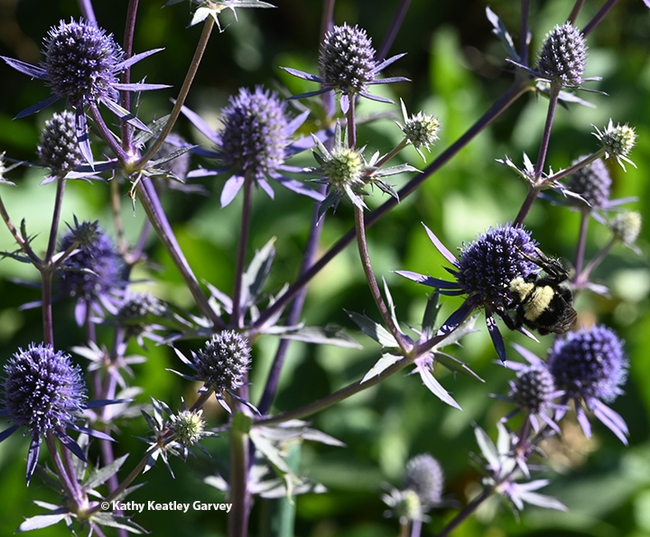
Can you spot the bumble bee in this bed of Eryngium amethystinum in the Sunset Gardens, Sonoma Cornerstone? (Photo by Kathy Keatley Garvey)
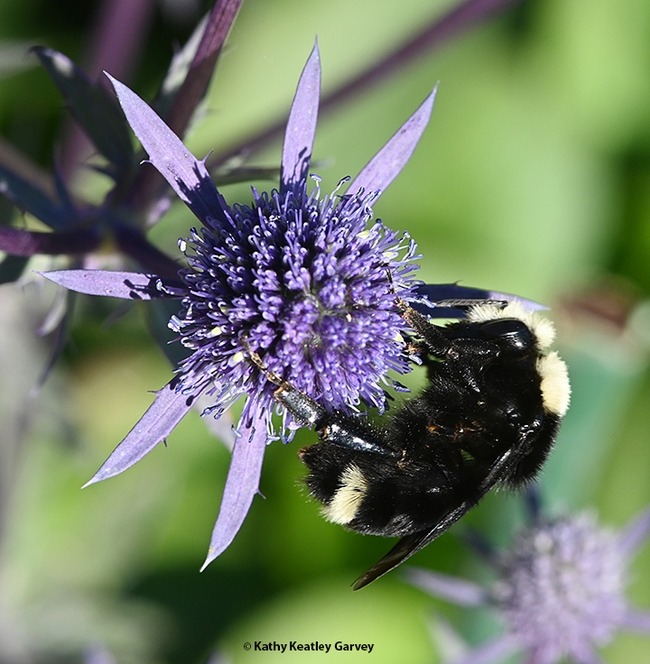
This image shows the characteristic yellow face and yellow stripe on the abdomen of a yellow-faced bumble bee, Bombus vosnesenskii. She is nectaring Eryngium amethystinum, in the Sunset Gardens at Sonoma Cornerstone. (Photo by Kathy Keatley Garvey)
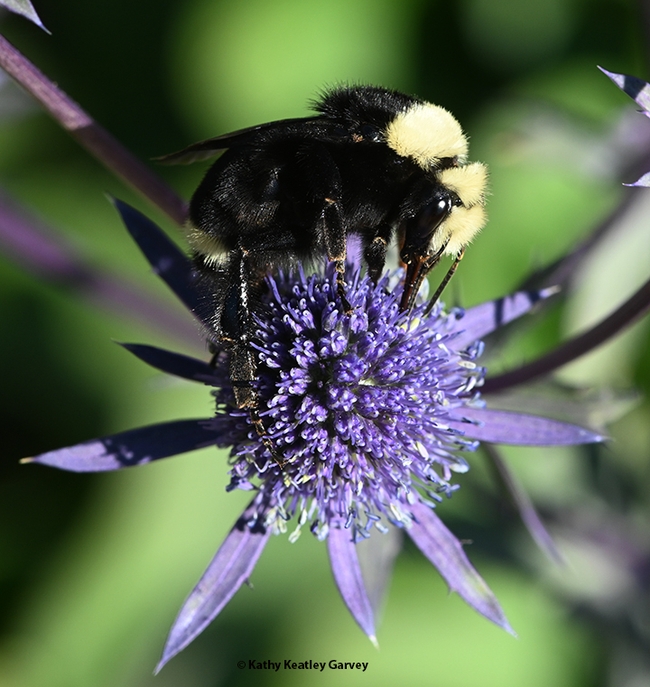
With her long proboscis, B. vosnesenskii sips nectar from an Eryngium amethystinum. (Photo by Kathy Keatley Garvey)
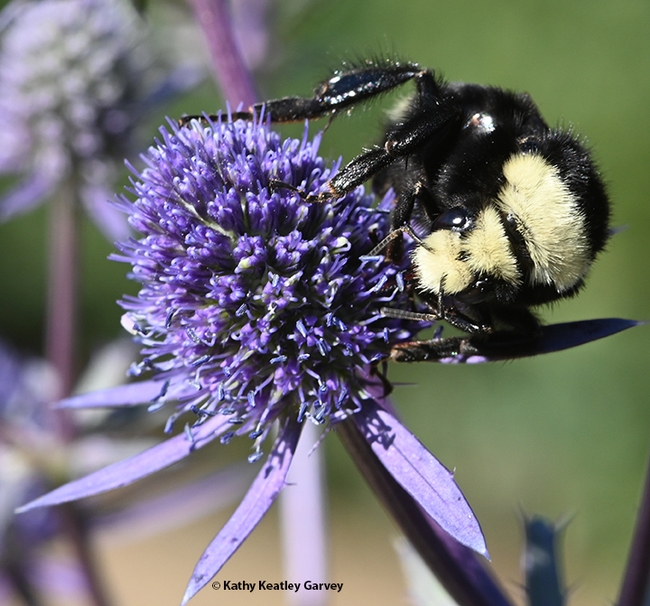
Close-up of the yellow face of the yellow-faced bumble bee, Bombus vosnesenskii. (Photo by Kathy Keatley Garvey)
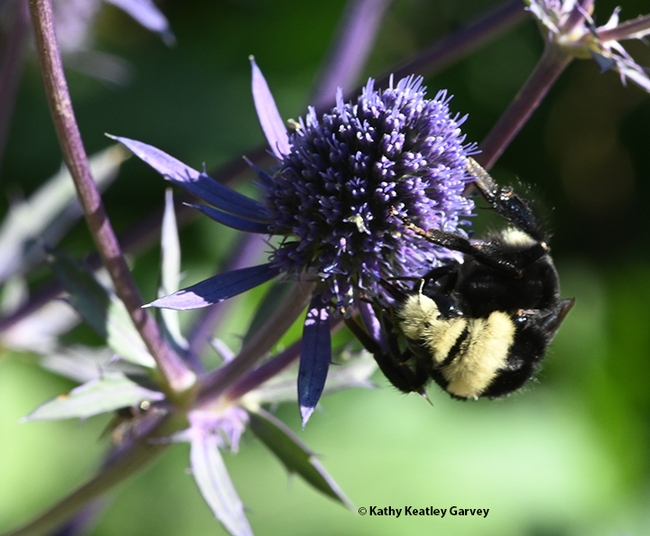
Bombus vosnesenskii moves around the Eryngium amethystinum. (Photo by Kathy Keatley Garvey)
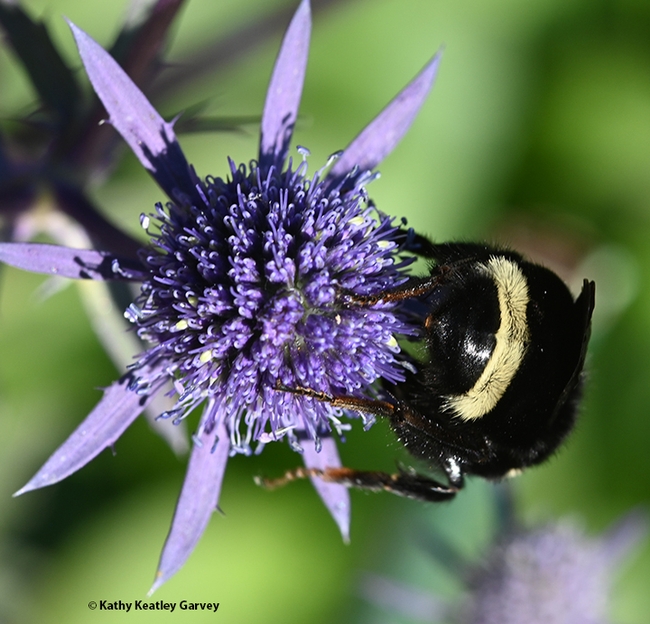
Bye, Bombus vosnesenskii. (Photo by Kathy Keatley Garvey)